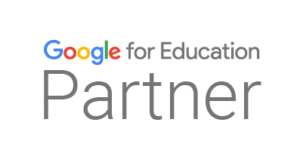Social-emotional learning (SEL) is essential for student development. It nurtures emotional intelligence, empathy, and resilience. In hybrid classrooms, blending in-person and virtual learning, SEL activities must engage all learners. These five unique activities promote self-awareness, relationship skills, and responsible decision-making. They create supportive, inclusive environments for both in-person and remote students.
1. Digital Gratitude Wall for Connection
A sense of community strengthens hybrid classrooms. A Digital Gratitude Wall encourages appreciation and positivity. Use a platform like Padlet to create a shared virtual board. Invite students to post gratitude notes, using text, images, or short videos. Prompt them to share what they’re thankful for, like a kind act or personal success. For example, a student might write, “I’m grateful for my friend’s help with homework.”
In-person students can add notes during class using tablets. Remote learners contribute via devices at home. Encourage everyone to read and comment on peers’ posts. This builds empathy and fosters connections across physical and virtual spaces. Dedicate five minutes weekly to review the wall together. A secure digital platform ensures safe, moderated sharing.
Why It Works – Gratitude activities promote positive interactions. They’re accessible for all learners. CASEL research shows gratitude exercises boost classroom morale by 20%.
2. Virtual Role-Play Scenarios for Empathy
Empathy is vital for resolving conflicts. Virtual Role-Play Scenarios help students practice perspective-taking. Use Zoom breakout rooms or similar tools for small group activities. Assign scenarios, like resolving a peer disagreement or supporting a struggling classmate. For example, one student plays a frustrated peer, another offers help. In-person students join breakout rooms via classroom devices.
Provide a digital script or prompt via Google Docs to guide discussions. After role-playing, groups debrief in the main session, sharing insights. Ask, “How did it feel to be in that role?” This encourages emotional understanding. Rotate roles weekly to ensure everyone practices empathy. Real-time collaboration tools streamline group assignments and feedback.
Why It Works – Role-playing builds social awareness and relationship skills. A 2023 study found empathy-focused activities improve peer interactions by 15%. Virtual platforms make cross-format collaboration seamless.
3. Interactive SEL Choice Boards for Autonomy
Choice empowers students and fosters self-management. Interactive SEL Choice Boards offer engaging, flexible tasks. Create a board using Google Slides or Canva with nine SEL activities. Examples include “Write a kind note to a peer,” “Draw your current emotion,” or “Record a 30-second gratitude video.” Students choose one task weekly, completing it in-person or remotely.
In-person learners use classroom devices or paper alternatives. Remote students submit work via an LMS like Google Classroom. Share completed tasks in a class gallery on a secure platform. This encourages peer feedback and builds community. Teachers can track engagement through analytics, ensuring equitable participation.
Why It Works – Choice boards promote autonomy and reflection. Research indicates student-driven activities increase engagement by 25%. Digital interfaces make creating and sharing boards simple.
4. Virtual Mindfulness Moments for Self-Regulation
Managing stress is critical in hybrid settings. Virtual Mindfulness Moments help students practice self-regulation. Use GoNoodle or a mindfulness app for guided exercises. Start class with a three-minute breathing activity or stretch. For example, prompt students to “Breathe in for four, hold for four, exhale for four.”
In-person students follow along on a projected screen. Remote learners join via Zoom, with cameras optional for comfort. Afterward, students reflect in a digital journal, answering, “How do you feel now?” Use Seesaw or similar tools for submissions. This activity suits all ages and works synchronously or asynchronously.
Why It Works – Mindfulness reduces anxiety and improves focus. Studies show five-minute mindfulness breaks decrease stress by 30%. Digital tools ensure accessibility for diverse learners.
5. Digital Accomplishment Showcase for Confidence
Celebrating achievements builds self-confidence and peer support. A Digital Accomplishment Showcase lets students share successes. Schedule a weekly Zoom session where students present a personal win, like mastering a skill or helping a friend. They can share a photo, drawing, or short video. In-person students present live; remote learners upload to a shared platform.
Encourage peers to offer positive feedback via chat or comments. For example, “Great job on your project!” This fosters positivity and relationship skills. Teachers moderate submissions to ensure inclusivity. Secure sharing tools protect student privacy while enabling cross-format interaction. Rotate presenters weekly to give everyone a chance.
Why It Works – Showcasing achievements boosts self-esteem. Research shows recognition increases student motivation by 18%. Digital platforms make sharing safe and equitable.
Implementation Tips for Success
Consistency drives SEL success in hybrid classrooms. Schedule activities into daily or weekly routines. Use analytics to monitor engagement and adjust as needed. Ensure accessibility with low-tech options, like printable prompts, for students with limited devices. Communicate SEL’s benefits to parents to gain support. Share progress updates securely with family engagement tools.
Address screen fatigue by balancing digital and non-digital tasks. Pair virtual journaling with offline reflection. Train teachers on Social-emotional learning integration using professional development resources.
Conclusion
These five Social-emotional learning activities create supportive, connected hybrid classrooms. They foster emotional growth, empathy, and resilience. Start with a simple activity, like a Gratitude Wall, and expand from there. Leverage digital tools to ensure inclusivity and engagement. Your students will grow emotionally and academically. Build brighter futures with intentional SEL practices.




 1st Floor, H-31, Sector 63,
1st Floor, H-31, Sector 63,